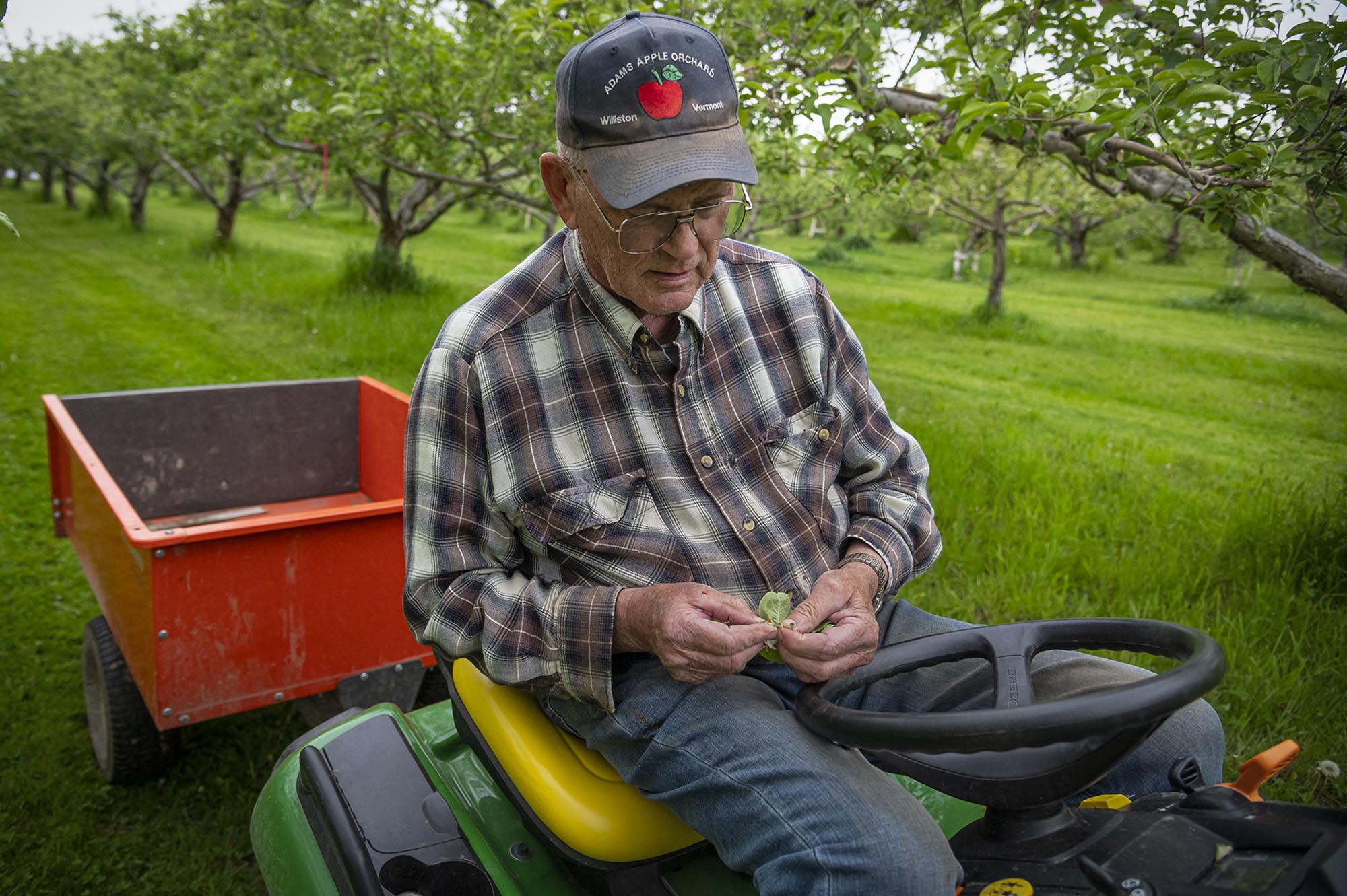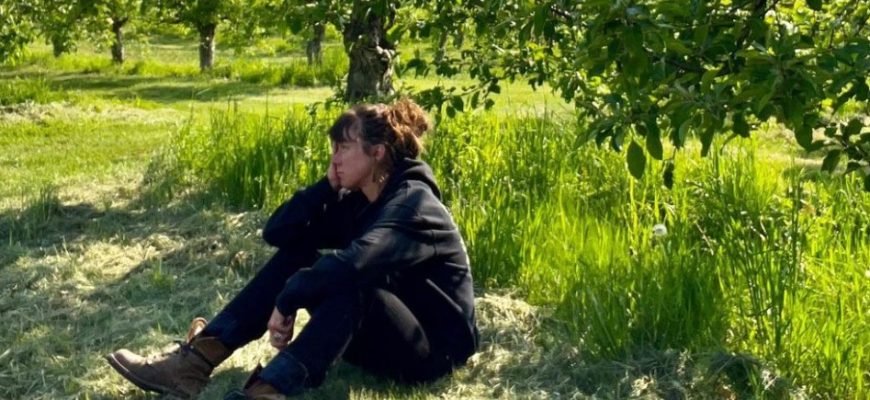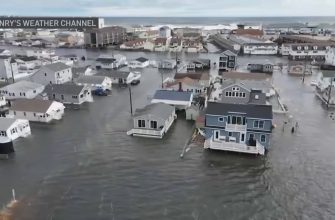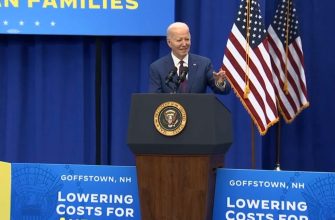
A hard frost crept through Vermont last week, damaging thousands of acres of growing produce. With overnight temperatures reaching as low as 25 degrees on the night of May 17, growers throughout the state woke up on Thursday morning to apple and berry blossoms that had turned black inside, conceding the possibility of future fruit.
On the morning after the frost, growers at Scott Farm Orchard in Dummerston surveyed the property, orchardist Erin Robinson said, sitting beside apple trees that were limp and glistening in the frost.
“It is the most brutal feeling to love something so deeply and be so powerless to protect it,” Robinson wrote in an Instagram post.
“In my 25 years of working with fruit crops in Vermont, I have never seen frost or freeze damage this extensive,” Terence Bradshaw, associate professor at the University of Vermont Extension Fruit Program, said in a press release. “My team is systematically collecting damage data across the region to help inform next steps to respond to this event.”
According to Anson Tebbetts, secretary of the Vermont Agency of Agriculture, Food and Markets, the hard freeze could result in significant losses for growers who cultivate fruits, produce, berries and wine — and for the Vermonters who enjoy them come summer.
“The losses caused by the late Spring frost is heartbreaking,” Tebbetts said in a press release. “The extent of the damage may not be known for several weeks but early indications are discouraging.”
Since the freeze, apple orchards and vineyards across the state have reported particularly grim circumstances, with 50% of primary buds reportedly lost in many Vermont vineyards, according to Kendra Knapik, president of the Vermont Grape and Wine Council.
Scott Adams, a co-owner of Adams Apple Orchard and Farm Market in Williston, said his farm was among the orchards severely damaged during the freeze.

“I think we might have taken a pretty significant hit on the apple crop here, based on how cold it got,” Adams said. “But we’ll know better in a week or a week and a half, since there are different elevations in the orchard (with fruitlets) in higher places that may have survived.”
Outsourcing produce from other farms could prove to be difficult, Adams said, since other vendors, including Green Mountain Orchards, a farm in Putney from which Adams’ farm has obtained additional produce in the past, also experienced dire losses from the freeze.
“If they were impacted, that means we’re impacted,” Adams said.
Despite the significant damage to much of the produce throughout the state, farmers at Adams Apple Orchard and Green Mountain Orchards remain optimistic that there will be enough blueberries to offer to pick-your-own customers.

“Nothing appears to be dead on the blueberry bushes,” Adams said. “I think the blueberries survived … (although) you can’t really count on a crop until it’s in storage.”
While it is unclear whether Vermont growers will be eligible for financial relief assistance, the U.S. Department of Agriculture Farm Service Agency provides federal crop protection for weather-related losses in certain circumstances. The Vermont Agency of Agriculture has begun reaching out to local growers to collect information on the damage, urging Vermont farmers to document and report their losses to their local Farm Service office in case aid becomes available.
For many farms, though, the losses caused by the freeze could be more than federal aid may be able to account for.
“(Crop insurance) is a pretty complicated entity to deal with,” Robinson said. “At this point we’ll take what we can get, but it by no means touches what is needed.”
At farms across the state, the effect of the freeze ripples out past the edges of the frozen fruitlets into the lives of the workers and consumers who depend on them.

“I grieve for the fruit and try to keep the perspective that my trees are still living, that there will be harvests to come,” Robinson said. “But there’s also fear now — Mother Nature is something that’s out of our control with climate disruption, and for the men who come here to work to support their families back home, this will have a huge impact on them, and not just my farm.”
Of the eight seasonal farmworkers who travel to Scott Farm from Jamaica annually to work during the growing season, Robinson said four will lose their jobs this year because of the financial pressures the farm is facing after the frost. Some of the workers, she said, have been working at Scott farm for more than 30 years.
Fredson Brissett, a farmworker from Trelawny Parish in Jamaica who has worked at Scott Farm for 25 years, said that after the frost, he sent photos of the blackened apple blossoms to some fellow Jamaican farmworkers who had yet to arrive at Scott Farm, and who this year, may not be able to at all.

“Plenty of us, including myself, depend on this overseas job to balance our budget back home,” Brissett said. “It’s gonna be a big setback for those who don’t have a chance to make it this year. Especially if they don’t find anywhere else to go.”
Brissett said he fears what could happen if frosts like this one become a more regular occurrence. He said he hopes farmworkers can collaborate to share strategies for preventing crop damage in the future to “save their crops and themselves.”
“For those who haven’t experienced this before as growers, and knowing this could happen again, I believe all growers should come together,” he said. “It’s gonna take a lot.”
Want to stay on top of the latest business news? Sign up here to get a weekly email on all of VTDigger’s reporting on local companies and economic trends. And check out our new Business section here.








